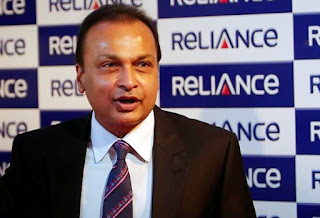With speculation mounting that Twitter Inc will soon have a new corporate owner, the 10-year-old social networking service - which has long struggled to define its core purpose -may end up heading in one of several distinctly different directions depending on who ends up paying for it.
Companies including Salesforce.com Inc, Walt Disney Co and Alphabet Inc's Google have shown interest in Twitter, which is working with investment banks to evaluate its options, according to people familiar with the matter.
With Salesforce.com, Twitter might turn its focus to customer service communications and mining its database of tweets for business intelligence. Google would likely be most interested in the social and news dimensions of Twitter. Disney, by contrast, might see it as a way to expand the reach of its sports and entertainment programming.
It is not clear how quickly Twitter might approach a sale, but it is moving to formalize the process, sources have said. A deal is by no means assured in light of the company's uncertain financial prospects and steep price tag - its market value is more than $16 billion after talk of a sale drove the stock up over the past few days.
Twitter Chief Executive Jack Dorsey, speaking at a conference in Washington on Monday, declined to comment on possible sale talks.
CORPORATE ROUTE?
Salesforce.com, run by CEO Marc Benioff, is focused on cloud-based sales and marketing software; unlike Twitter, its main product is aimed at businesses users, not consumers. Under Salesforce.com, Twitter could become a corporate tool used to power sentiment analysis and nurture customer relationships.
Salesforce.com already uses the Twitter "firehose" for its new artificial intelligence platform, Einstein.
"It would give them the social graph and a better idea of how social media relates to its customers," said Ryan Holmes, chief executive of Hootsuite, a private technology firm that helps brands and consumers manage their social media accounts.
Holmes also said that if Salesforce.com owned all of Twitter's data, it could have better insights into what sort of conversations companies such as airlines or telecom firms might be having with their customers and thereby gain more understanding of their business challenges.
But many Twitter users - especially newer ones - are not active tweeters, which over time could limit the value of the data Twitter can provide. Salesforce.com could also likely gain much of the benefit of Twitter's data from licensing its trove of tweets as opposed to buying the whole company.
Salesforce.com investors are already spooked by the speculation it could acquire Twitter: its shares are down 6 percent since news of the company's interest flared up last week.
GOOGLE AD PLAN
Twitter would fit easily with Google's online advertising-driven business model. Ads could be sold across paid search, YouTube, display and mobile on Twitter - while filling a gap for Google, which has struggled with social media.
"Google already has the eyeballs with advertisers. Cross-selling to the Twitter inventory could be an amazing play for them," Hootsuite's Holmes said.
Google, which has expertise in monitoring its video service YouTube, would know how to deal with the tricky policy issues facing Twitter, such as abusive tweets and censorship.
Still, such a tie-up faces potentially fatal regulatory hurdles, analysts said. In Europe, where the company has a bigger share of the search market than in the United States, the company is already facing two antitrust investigations.
"Google could help Twitter's user acquisition problem. The unknown is whether regulators in the United States and European Union would allow the transaction," said BTIG analyst Rich Greenfield.
Facebook Inc, meanwhile, has been trying to replicate Twitter on its own platform and could also face antitrust challenges if it tried to buy the company, Greenfield said. So far Facebook has not been mentioned as a potential buyer, but with its large cash reserves and penchant for surprise moves it cannot be counted out.
THE MEDIA PLAY
Twitter's foray into live streaming of National Football League games and its presence in news gathering could interest media companies such as Disney, which owns sports channel ESPN.
Twitter's presence on mobile devices could help any media company, all of which are struggling to find mobile growth, according to BTIG's Greenfield. No media company has a mobile product with as much reach as Twitter, he noted.
"The world of media is shifting to mobile and these newer platforms are becoming the future," Greenfield said.
Still, media companies do not have the best track record with social media. News Corp's acquisition of MySpace in 2005 ended in disaster. And some question whether the media companies and top personalities that have been so important to Twitter would stick around if a rival media firm were the owner.
















